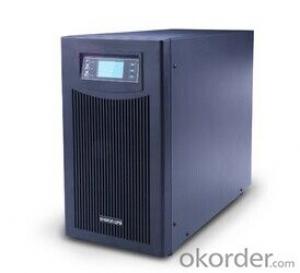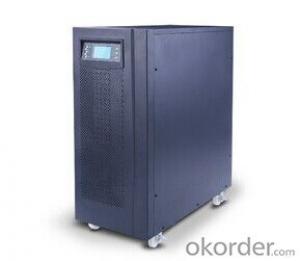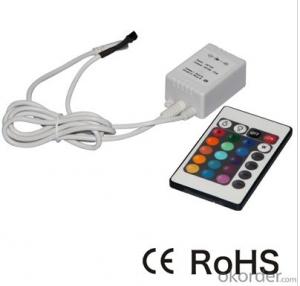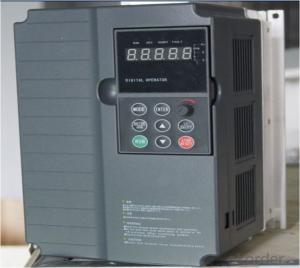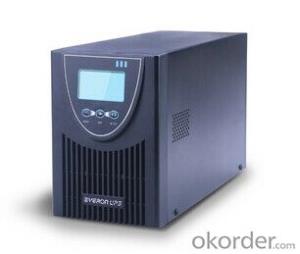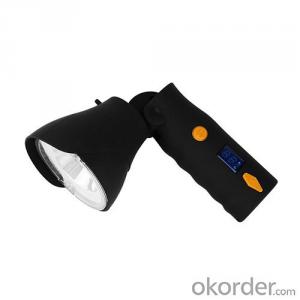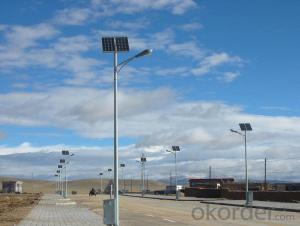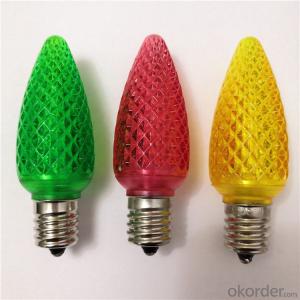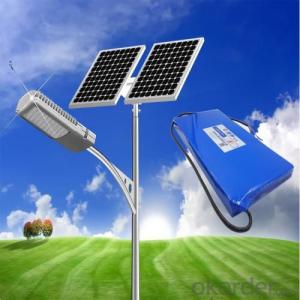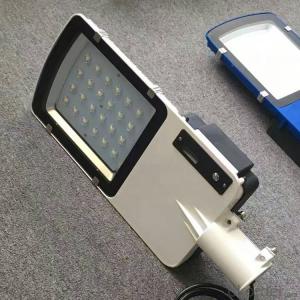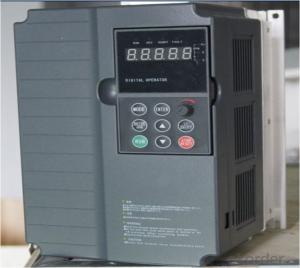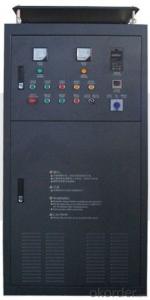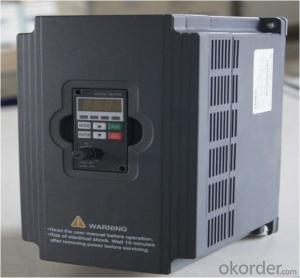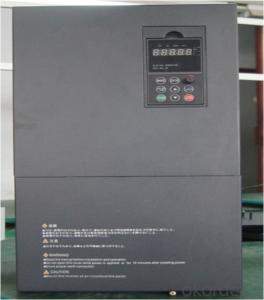Frequency Inverter Single-phase 380V class 275KW
- Loading Port:
- Tianjin
- Payment Terms:
- TT OR LC
- Min Order Qty:
- 1 pc
- Supply Capability:
- 100000 pc/month
OKorder Service Pledge
OKorder Financial Service
You Might Also Like
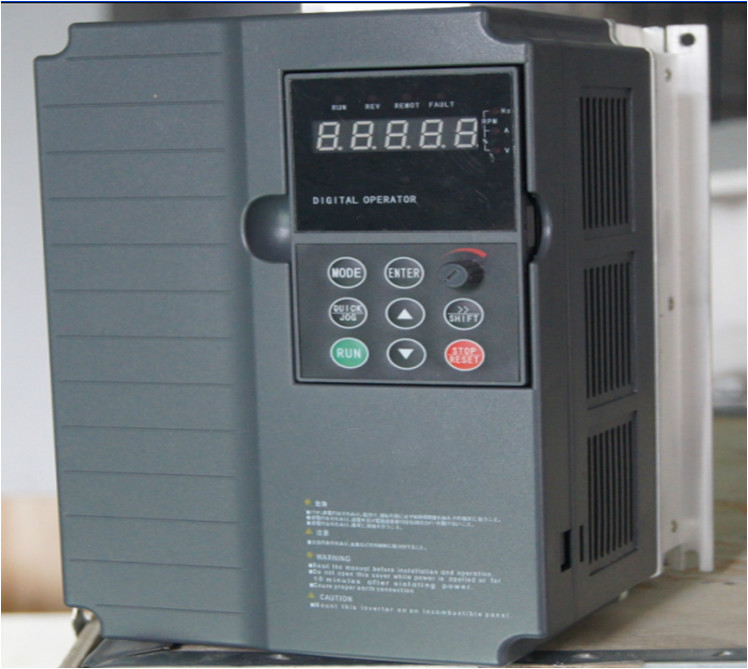
General
CNBM frequency inverter is a high-quality, multi-function,
low-noise variable frequency drive which is designed, developed and manufactured according to international standards.
It can meet different needs of industrial conditions.
The inverter applies advanced control technology of space voltage vector PWM, with functions of constant voltage control, power-off restart, dead zone compensation, automatic torque compensation, online modification parameter, high-speed impulse input, simple PLC and traverse.
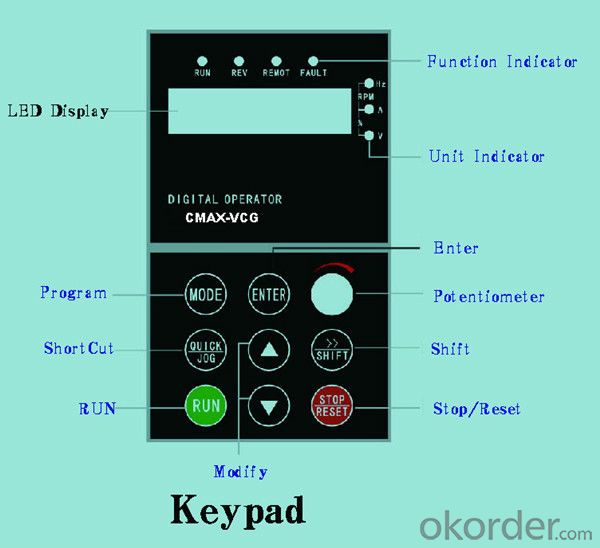
Application
Textile: coarse spinner, spinning frame, wrap-knitting machine, loom, knitting machine, silk-spinning machine, etc.
Plastic: extruder, hauling machine, decorating machine, etc.
Pharmacy: mixer, roaster, etc.
Woodworking: engraving machine, sander, veneer peeling lathe, etc.
Papermaking: single type papermaking machine, etc.
Machine tool: non-core grinding machine, optical lens grinding machine, cutting mill, etc.
Printing: cloth-washing machine, dye vat, etc.
Cement: feeder, air blower, rotary furnace, mixer, crusher, etc
Fan and pump: kinds of fans, blowers and pumps
Specification
Item | Specification | |
Input | Input voltage | 220/380V±15% |
Input frequency | 47~63Hz | |
Output | Output voltage | 0~input voltage |
Output frequency | 0~600Hz | |
Peripheral interface characteristics | Programmable digital input | 4 switch input, 1 high-speed impulse input |
Programmable analog input | AI1: 0~10V input AI2: 0~10V input or 0~20mA input, | |
Programmable open collector output | 2 Output (3.7kW and above: 1 Open collector output) | |
Relay Output | 1 Output (3.7kW and above: 2 Relay output) | |
Analog output | 2 Output, one is 0~10V, another is 0~20mA or 0~10V | |
Keypad | Display:5-digit 8-section LED (Red), 2 indicators; parameter setting: 8 keys (including multi-function hot key ), 1 potentiometer | |
Technical performance characteristics | Control mode | All digital space voltage vector SVPWM algorism |
Overload capacity | G purpose: 150% rated current 60s P purpose: 120% rated current 60s | |
Speed ratio | 1: 100 | |
Carrier frequency | 1.0~10.0kHz | |
Torque compensation | Linear, multi-point, 1.3th power, 1.7th power, 2.0th power reduced torque; Compensation voltage range: automatic compensation and manual compensation 0.1~10% | |
Automatic voltage adjustment | It can automatically maintain output voltage constant when grid voltage fluctuates. | |
Automatic current adjustment | When the current is over current limit, under clocking automatically limits output current. | |
Function characteristics | Frequency setting mode | Keypad digital analog input, keypad potentiometer, impulse frequency, communication, multi-step speed and simple PLC, PID setting and so on, switch-over of setting modes. |
Simple PLC, multi-step speed control | 16-step speed control | |
Special function | Traverse control, length control, time control | |
QUICK/JOG key | User-defined multi-function hot key | |
Protection function | Over-current, Over voltage, under-voltage, over-heat, phase failure, over-load and motor over-load | |
Working condition | Installation site | Indoor, altitude of less than 1km, dust free, non-corrosive gases, no direct sunlight |
Application environment | -10°C~+40°C, 20~90%RH (no dew) | |
Vibration | Less than 0.5g | |
Storage temperature | -25°C~+65°C | |
Installation type | Wall-mounted type, floor cabinet type | |
Cooling mode | Air-forced cooling | |
- Q:What's the difference between universal inverter and fan pump converter?
- Fan and pump load:In a variety of fans, pumps, oil pumps, with the rotation of the impeller, the air or liquid within a certain speed range of resistance is roughly proportional to the speed of the 2 side of the n. As the speed decreases, the torque decreases by 2 times the speed. The power required for this kind of load is proportional to the 3 power of the velocity. When the required air volume and flow rate are reduced, the frequency and speed of air flow can be regulated by the frequency converter, so the energy can be saved substantially. Because the power required at high speed increases with the speed, and is proportional to the speed of the three side, so the fan and pump load should not be used in the ultra power frequency operation
- Q:There is a feed and send system. Now due to the severity of the material is not the same as the two converters often change speed, the workers do not understand their own, often by, often bad now how to use the best way you can use a potentiometer or other method, control of the two frequency converter, synchronous operation. Is to adjust one, and the other also with the kind of frequency, so that you can let the workers themselves to open, and the two inverters, the same manufacturer, the same model, the same load,
- Two start with frequency conversion. The frequency converter is controlled by a potentiometer, and the analog output signal (AO.GND) is sent into the converter and connected to the AI.GND port of the converter. If the pulse port can also be connected to the pulse port.
- Q:First of all, I would like to achieve the frequency converter with motor static linear acceleration, high-speed linear deceleration stop processFirst question: I say kind of situation, three paragraph speed start, 0.1hz---> high 30hz-->0.1hzSecond problem: manual speed instruction 1, speed 2, speed 3 instruction instruction I want to use PLC to control three speed motor with three reverse contact dry. I understand speed instruction 1 is switched on (2, 3 connected) transmission section set the frequency with the frequency segment set 0HZ123 AssociationThird questions: manual section, speed command, main frequency and STEP1-STEP7 stage setting frequency, I use PLC analog to the frequency main frequency setting, plus and deceleration, STEP1-7 are set 0, can achieve what I wantInitial contact frequency converter, home pointing
- Using PLC to analog converter control input frequency up to speed off from the requirements of the inverter frequency source set P-00 speed by 00 digital operation panel to analog frequency PLC given 0102 given frequency parameters can choose the set of 01 or 02 and the period of quick closing even P-17P-19 parameters affect analog control
- Q:What do you mean by the capacity of the inverter and the capacity of the motor?
- Because the motor consumes active power and consumes reactive power, and the reactive power is also occupied, the motor with 70KW can only be usedThe power is known to everyone
- Q:High-voltage converterGeneral inverterPump frequency converterEngineering frequency converterCould you tell me some frequency converter according to the class?
- Specific answer to your question: 1, high voltage inverter: This is based on the input voltage level terms. Generally speaking, 10KV is more than 6KV voltage high voltage frequency converter, 1140V, 3300V in general is medium (some people also called it the high voltage level of 380V, 660V), 480V, commonly called the low-voltage inverter; 2, pump inverter: This is according to the type of application in terms of. Fan pump inverter mainly refers to the frequency converter used to drag fans, pump load, the main feature is light load, simple application.
- Q:If you don't plug in the PG card, do you use PLC's PID control?Plug in the PG card and the PLC PID control, which is reliable and precise?
- Using PG card of frequency converter to realize closed loop vector controlFor example, vertical motion loads, such as cranes and elevators, require closed-loop vector controlIn this case, the frequency converter must install the PG card, and the encoder signal will be connected to the PG card, using the frequency converterPID instruction.In this application, the PID function module of PLC can not realize the vector control function.
- Q:Surface grinder can add frequency converter, what are the advantages and disadvantages?
- The use of variable frequency speed control, you can simplify the gear, gearbox and other complex mechanical drag mechanism, high degree of automation, simple operation, easy maintenance.The frequency converter adopts the external terminal control, and the DC 0-10V signal issued by the numerical control system is fed into the frequency converter through the VI ACM terminal of the frequency converter, and the digital setting speed is controlled to the analog variable frequency output. The motor speed is controlled by the size of the voltage signal produced by the numerical control system.The frequency converter has voltage (DC0 - 10V), current analog input interface, and can be well matched with the control signal of CNC system.
- Q:What does Ro1c mean on a converter?
- RO1C is the common terminal and the RO1A is normally closed, and the RO1B is normally open. The set of contacts is the output signal that is ready to run. That is, the self-test of the converter is completed and the output signal of the relay can be operated.
- Q:I would like to ask, the inverter in use in the grid is very high?
- Now the domestic and foreign status of power grid is different from that of Europe and the United States Department of conversion products to the domestic needs change, in fact, if you choose, you can choose domestic brands inverter, after all, or your own brand more familiar with the situation! Our factory in Chongqing, is used in conjunction with Kang high voltage frequency conversion, suitable for input voltage range comparison, but also very suitable for domestic power grid conditions.
- Q:What is the difference between a frequency converter and a servo controller?
- The speed of an asynchronous motor is =60f/p.f, the frequency of alternating current, P is the pole, and the logarithm.60 is the number of seconds in a minute. As can be seen from the form, the number of poles has been fixed. The speed of the asynchronous motor is proportional to the frequency of the power supply. The frequency of the asynchronous motor is changed by changing the frequency of the power supply. This is the principle of variable frequency speed regulation
1. Manufacturer Overview |
|
|---|---|
| Location | |
| Year Established | |
| Annual Output Value | |
| Main Markets | |
| Company Certifications | |
2. Manufacturer Certificates |
|
|---|---|
| a) Certification Name | |
| Range | |
| Reference | |
| Validity Period | |
3. Manufacturer Capability |
|
|---|---|
| a)Trade Capacity | |
| Nearest Port | |
| Export Percentage | |
| No.of Employees in Trade Department | |
| Language Spoken: | |
| b)Factory Information | |
| Factory Size: | |
| No. of Production Lines | |
| Contract Manufacturing | |
| Product Price Range | |
Send your message to us
Frequency Inverter Single-phase 380V class 275KW
- Loading Port:
- Tianjin
- Payment Terms:
- TT OR LC
- Min Order Qty:
- 1 pc
- Supply Capability:
- 100000 pc/month
OKorder Service Pledge
OKorder Financial Service
Similar products
New products
Hot products
Hot Searches
Related keywords


